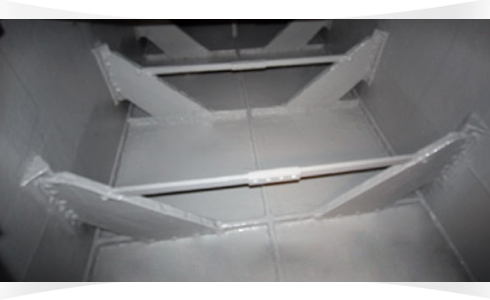



GRP Lining has diverse applications including Corrosion Resistance, Structural Strengthening and Waterproofing. It can be found in most if not all Water Storage Tanks, Sewerage Tanks, Chemical Storage Tanks, Tank Roof Lining, Manholes, Sewerage Sump Pit, Cooling Towers, Chemical Plants, Fire Fighting Networks, Pipeline Networks, Water Transmission Pipelines, etc.
Special grade resins are used to attain various properties, which allow the GRP Lining to withstand resistance to fungi & algae, strong acids, chemicals and high temperature. It’s an effective alternative to component replacement.
GRP Lining will completely and seamlessly seal the cracks, leaks, corrosion and flaking materials. It offers a new life to damaged/eroded walls providing a long term, secure environment at a fraction of the cost of a total rebuild.
Method of Normal GRP Lamination – on Concrete / Steel Tank Surface
1. After the surface preparation and removal of dust, first coat of resin is applied on the concrete surface. Care is taken to see that the resin fills all voids in the concrete surface so as to avoid the formation of air bubbles.
2. Prime Coat - Resin is applied on concrete surface. Then first pre-trailed layer of glass fibre (CSM) is placed on the resin applied surface.
3. A woolen roller is used for applying the resin on the mat.
4. Second layer of glass fibre (CSM) is placed over the first layer with resin applied over it.
5. Metallic roller is used to impregnate the lamination and to remove any air entrapment.
6. Sufficient time is allowed for successive glass fibre impregnation to avoid peak exothermic heat.
7. Successive layer (for ex.: Multi Layer of matt 450 gsm) is applied on the already impregnated lamination with thickness condition for better bonding between the layers. The procedure is repeated until required thickness is achieved.
8. Finally Top Coat (Gelcoat Finishing) will be applied on the cured lamination.
Normal Measures:
GRP 3MM Lamination
GRP 4MM Lamination
GRP 5MM Lamination